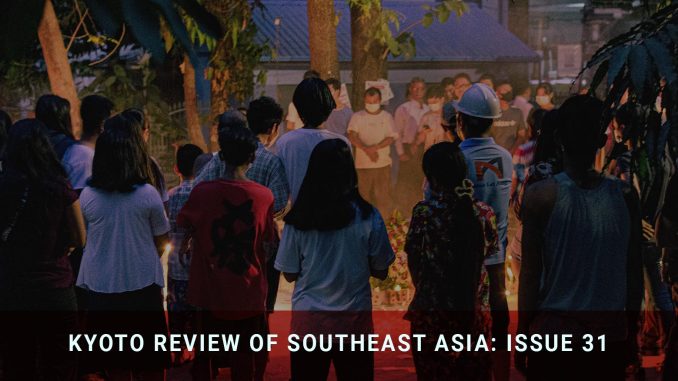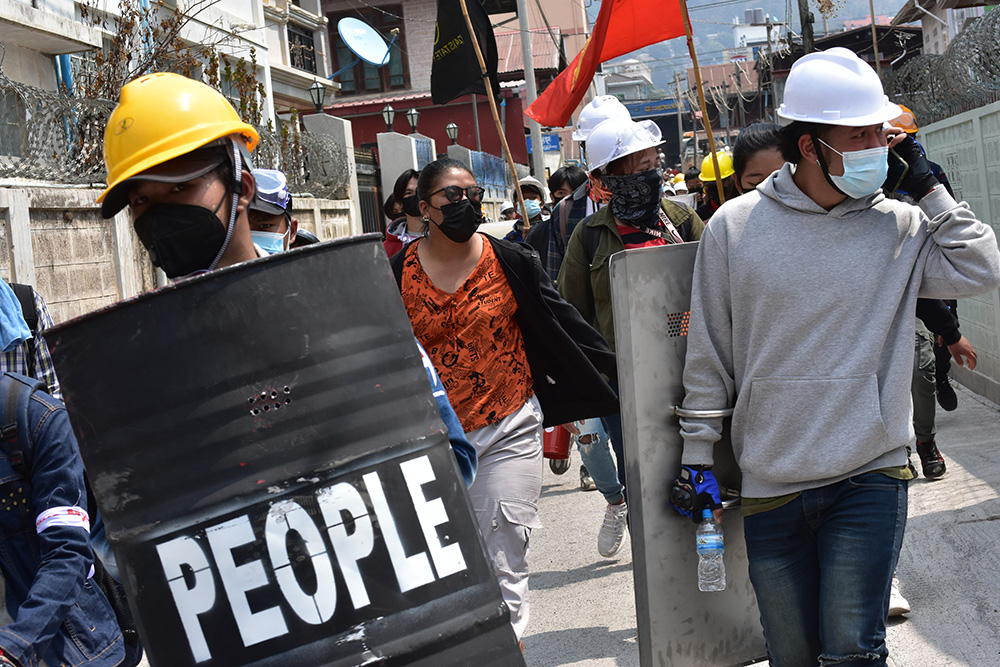
Title: “Myanmar’s Transition Stalled: From Opening to Coup”
Issue 31 of Kyoto Review of Southeast Asia & print PDF
Eds. Kai Ostwald, & Kyaw Ying Hlaing
Center for Southeast Asia Studies, Kyoto University
Myanmar has undergone a tumultuous period of change in the last decade, with the military junta finally loosening its grip on power in the early 2010s. In 2015, Aung San Suu Kyi’s National League for Democracy (NLD) swept to power in a landmark democratic election, marking a new chapter in Myanmar’s political history. However, the country’s transition to democracy was short-lived, as a coup by the military in February 2021 has plunged the country into turmoil once again.
In “Myanmar’s Transition Stalled: From Opening to Coup,” authors Nick Cheesman, Nicholas Farrelly, and Trevor Wilson provide a comprehensive analysis of Myanmar’s recent history and the events leading up to the military coup. The book examines the social, political, and economic changes that have taken place in Myanmar since the military junta began to loosen its grip on power.
It is a timely and insightful book that provides a comprehensive analysis of Myanmar’s recent history, its transition from military rule to democracy, and the recent coup that has upended the country’s progress. The book is edited by Pavin Chachavalpongpun, a respected scholar of Southeast Asian politics and international relations, and features contributions from a diverse group of experts and scholars.
The book is divided into three parts, with the first part focusing on the period of political opening that began in 2011 with the release of Aung San Suu Kyi and the National League for Democracy (NLD) from house arrest. The second part examines the challenges and limitations of Myanmar’s democratic transition, including issues of governance, human rights, and ethnic conflict. The final part of the book explores the events leading up to the military coup in February 2021 and the implications for Myanmar’s future.
The authors also examine the international community’s response to Myanmar’s transition to democracy, including the lifting of sanctions and the re-establishment of diplomatic relations with Western countries. They argue that while these measures helped to promote democracy and economic development in Myanmar, they also reinforced the military’s economic power and allowed it to maintain its grip on the country’s politics.
The book concludes with an analysis of the military coup in February 2021, which saw the NLD government overthrown and Aung San Suu Kyi arrested. The authors argue that the coup was a response to the military’s loss of economic and political power under the NLD government, and that it represents a major setback for Myanmar’s transition to democracy.

One of the strengths of the book is its breadth of coverage and diverse perspectives. The contributors come from a range of disciplines and backgrounds, including political science, history, journalism, and human rights advocacy. This multidisciplinary approach allows for a nuanced and multifaceted analysis of Myanmar’s recent history and the challenges it faces.
Another notable feature of the book is its focus on the role of external actors in Myanmar’s transition and current crisis. The contributors explore the role of regional and international actors, including ASEAN, China, and the United States, in shaping Myanmar’s political trajectory. This is an important and often overlooked aspect of the country’s recent history, and the book provides valuable insights into the complex dynamics of external influence and internal politics.
In addition to the reasons outlined above, “Myanmar’s Transition Stalled: From Opening to Coup” is an essential read for several other reasons. First, the book offers a nuanced and complex understanding of the various actors and forces shaping Myanmar’s political landscape, including the military, the civilian government, ethnic minorities, civil society, and external powers. The author’s use of interviews, surveys, and other empirical data provides a rich and detailed picture of the country’s complex political dynamics.
Second, the book is timely and relevant, given the ongoing political crisis in Myanmar. The military coup in February 2021 has plunged the country into a new period of political uncertainty and instability, and the book’s analysis of the events leading up to the coup provides important insights into the underlying factors that have contributed to the country’s political crisis.
Finally, the book’s multidisciplinary approach and diverse perspectives make it a valuable contribution to the literature on Southeast Asian politics and international relations. The author draws on a range of academic disciplines, including political science, history, anthropology, and sociology, and incorporates the perspectives of a wide range of actors, including government officials, civil society activists, journalists, and scholars.
Even for those who are not familiar with Myanmar, “Myanmar’s Transition Stalled: From Opening to Coup” is a compelling and informative read that sheds light on the country’s political and social dynamics. As Myanmar is a country that has been largely isolated from the rest of the world for decades, this book provides a rare and detailed window into its recent history and its ongoing struggle for democracy and human rights.
One of the strengths of the book is its clear and engaging writing style, which makes it accessible to a broad audience. The authors do an excellent job of presenting complex political and social issues in a way that is easy to understand, without sacrificing depth or nuance. This makes the book an excellent choice for anyone who is interested in learning more about Southeast Asia or the challenges of democratization and development in a post-authoritarian context.
Another reason why “Myanmar’s Transition Stalled” is an essential read for anyone interested in global affairs is that it provides a powerful case study of the complex interplay between domestic politics and international relations. The authors explore the role that external actors such as China, the United States, and the Association of Southeast Asian Nations (ASEAN) have played in Myanmar’s political and economic development. This is particularly relevant in the current global context, where the rise of authoritarianism and populism is challenging the liberal international order, and where the role of regional organizations such as ASEAN is coming under increased scrutiny.
Reviewed by Robert Bociaga
Robert Bociaga is a freelance journalist, featured in Nikkei Asia, CNN, Globe and Mail and others.
